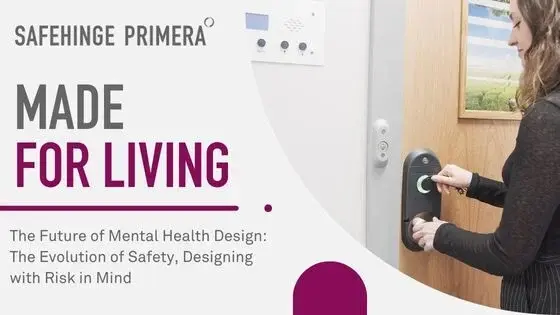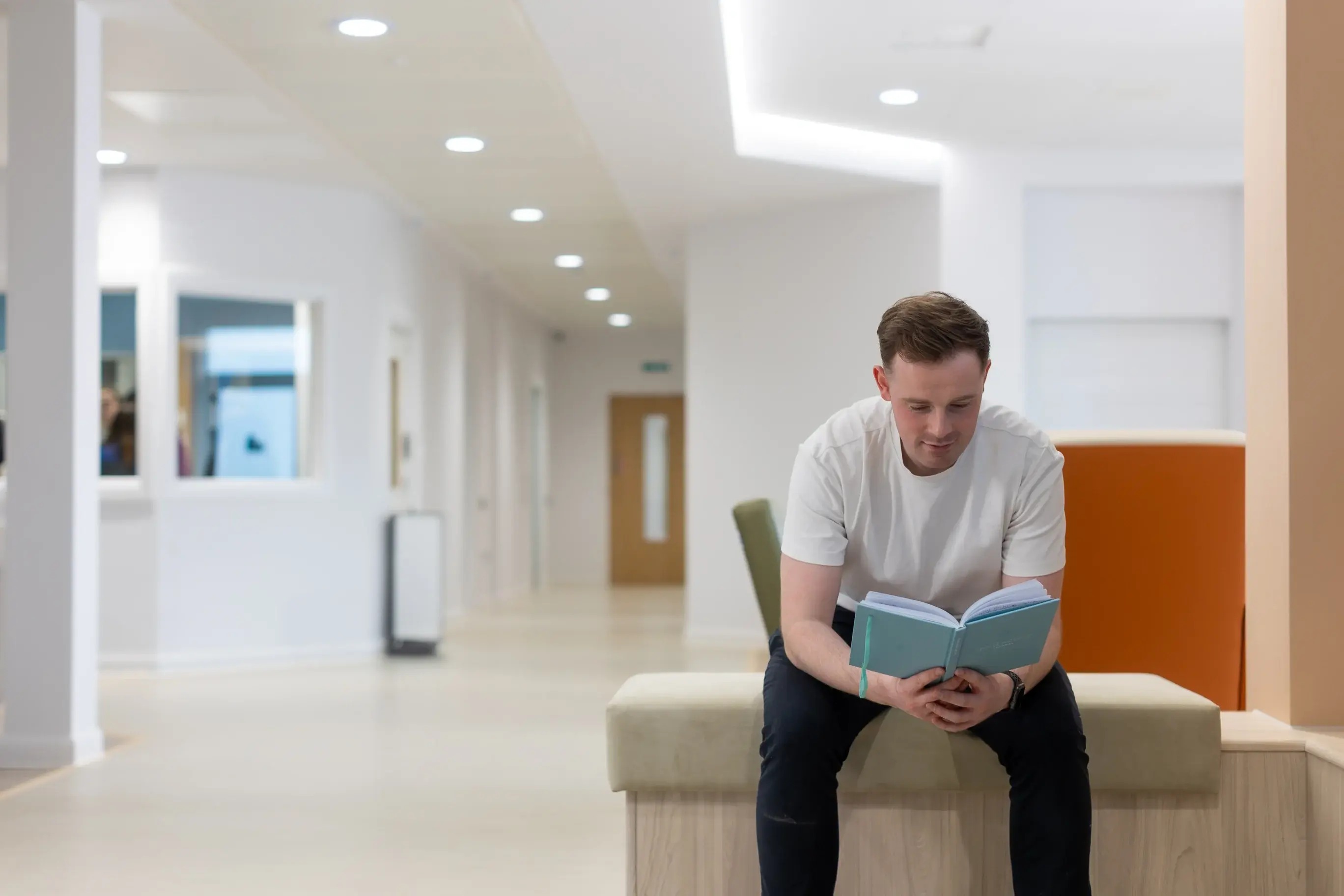Limiting risk is not the ultimate goal. It’s recovery.
There is never 0% risk in a behavioral mental health environment, as risk forever evolves. One example was when we designed our Ligature Resistant Bathroom Door; we reduced the risk of patients attempting to take their own life on this door. However, the risk didn't disappear. Unfortunately, it increased the risk of suicide occurring on the bedroom door. Many mental health inpatients seek new opportunities to cause themselves harm when going through a vulnerable time. Nevertheless, steps can be taken to limit risk and prevent inpatient suicides.
In a recent mental health webinar, Philip Ross, CEO and Co-founder of Safehinge Primera, shared his expertise as an industrial design engineer and his passion for improving products and spaces in mental and behavioral health. This article summarizes the key points discussed during the webinar, focusing on the importance of design principles, the challenges faced in behavioral hospitals, and the need for safety and privacy.
Evolving Risks and Design Solutions
90% of suicides occur in the bedroom or the bathroom
This healthcare webinar hosted by the centre for health design examined the importance of understanding the evolving risks in behavioral health spaces, focusing on doors. Philip discussed ligature points and how two hard surfaces coming together can create a ligature which is why barriers such as doors are most commonly used when a patient attempts to take their own life. Sadly, patients can make a ligature on a door in less than 3 seconds. Therefore, Philip suggests designing solutions that address ligature risks in doors and door hardware to minimize potential harm. In the webinar, he also highlights the need to proactively anticipate and address future risks.
Solving Tomorrow’s Problems
-
Privacy is a key ingredient to risk.
Privacy emerged as a crucial element in behavioral health design. Philip discussed the trend of single occupancy bedrooms and highlighted the importance of patients having their own room as it provides them with privacy and aids their recovery.
Yet, he stressed that privacy is also a key ingredient for risk as people are less likely to cause themselves harm in a public space than they would be behind a closed door. Philip suggested addressing these issues by moving the risks outside of private spaces, such as bedrooms and bathrooms, where staff have better visibility and can respond to potential emergencies. -
Fast & reliable access: Anti-barricade solutions
During the webinar hosted by the center for health design, the use of anti-barricade solutions on doors to prevent patient suicides was highlighted. Philip described a specific incident to emphasize the importance of considering patients not only tampering with locks but also active pressure when designing these devices. In this scenario, a patient trapped a staff member inside a room by pressing their hand hard against the door, which also pressed against the employee's neck.
Fortunately, on-site construction workers could intervene and open the door using a mallet to break open the lock and save the person's life in time. During the webinar, Philip stressed the importance of having an anti-barricade doorset with a collapsible doorstop to allow access into the room, no matter the pressure applied to the door or how the lock has been tampered with. -
Learning from others
53.8% of ligatures occur at a lower level on the door
Ligature risks can happen at all heights. During the webinar, Philip spoke about the evolution of door technology and gave an example of when designers and healthcare professionals created the door top alarm. This alarm was developed to alert staff when someone attempted to ligature at the top of a door.
This was effective for years. However, through ligature learning, patients realised that only the top of the door was covered and began creating ligatures at a lower level. This is another example of the evolution of risk in behavioural health environments. Philip explained that to reduce this risk, the entire door should be turned into a weighing scale to ensure that no matter where on the door a patient attempts to ligature, the alarm will alert staff. This is where the idea for our full-door ligature alarm evolved. Philip also makes the point in the webinar that we must not just look at what we’ve learned from the past but continue product testing and preempt risks in the future to be prepared for them.
A round table discussion
At the end of the webinar, there was a 30-minute round table discussion with experts from across the healthcare industry.
The challenges of staffing shortages in behavioral health care design during the panel discussion were explored. The experts stressed the need for environments that allow staff to observe and interact comfortably with patients while maintaining their privacy and dignity. The panel considered the role of technology in achieving this balance, cautioning that although technology can be helpful, it should not replace personal connections and might create a false sense of security.
Ligature risk and its impact on patient safety were also addressed. The panel acknowledged the necessity of addressing ligature risk while preserving patient privacy, emphasizing the need for a balance. The discussion then turned to the role of technology in managing risks. Instances were shared where technology, like alarms, had unintended consequences, leading to staff frustration and potential risks. The panel agreed that while technology can contribute to safety and therapeutic environments, it should not overshadow the significance of personal interactions and connections between staff and patients.
The webinar emphasized the importance of considering staffing challenges, patient safety, and therapeutic design when creating behavioral healthcare environments. Therefore, by focusing on privacy, understanding evolving risks, and learning from safety alerts, designers can create safer and more supportive environments for individuals going through a vulnerable time. Finally, the webinar raised awareness of the need for a balanced approach incorporating physical design elements and human connections to provide compassionate and effective care.
To learn more about the topics covered in this article, we recommend watching the full recording of the webinar titled "The Evolution of Risk in Inpatient Behavioral Health & Key Design Insights."
Did you enjoy learning from this webinar? Register today and save your space at another live webinar taking place on July 27th. We'll be talking about the healing power of Art within Behavioral settings and will be joined by the Artist and Co-founder of the Mental Health art charity - Hospital Rooms.






